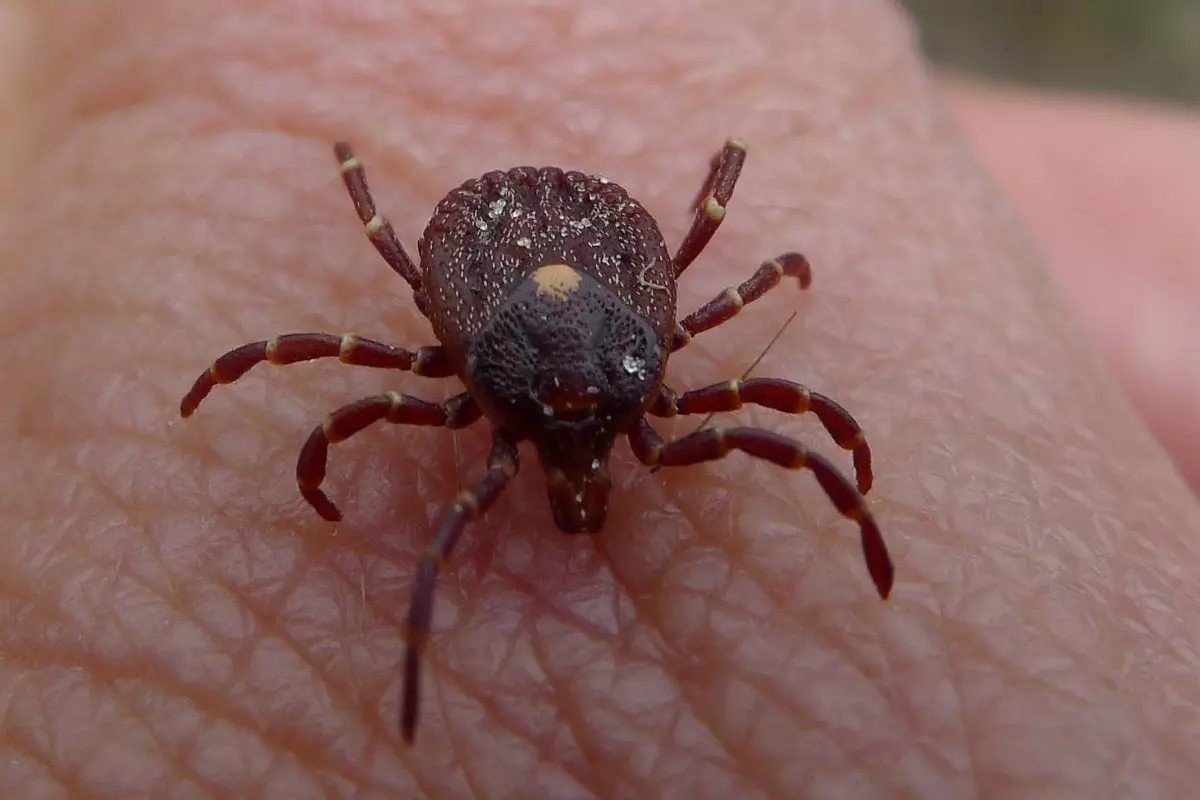
Karnataka: Monkey Fever hits Malnad again; lack of vaccines, medicines biggest worry
The death of a teenager from the disease has left people in Shivamogga district deeply worried; that there's no effective medicine or vaccine to control the disease has made it worse

Monkey fever or Kayasanur Forest Disease (KFD) again reared its head in Shivamogga district after an18-year-old girl from Bappanamane village in Hosnagar taluk of the district succumbed to the infection on January 8.
KFD, a tick-borne viral disease, which spreads during the summer season, has been prevalent in the Malnad region for the past seven decades. Ananya, the daughter of a farming couple from Bappanamane village situated in the midst of a dense forest, was admitted to a government hospital in a nearby primary health centre due to high fever 10 days ago. She was later referred to the Hosanagar taluk hospital.
After she was examined there, it was confirmed that she was infected with monkey fever. Later, she was admitted to McGann Hospital in Shivamogga for further treatment. But, due to the lack of proper treatment for KFD at the hospital, she was sent to Kastura Ba Hospital in Manipal on January 5. After staying in a critical condition for three days, Ananya, finally succumbed to the disease on Monday morning.
Failure of medical treatment
Speaking to The Federal, district health officer (DHO) Shivamogga, Dr Rajesh Suragihalli said, "This time, the number of cases of infection is very low. So far, 2,911 suspected cases have been tested and infection confirmed in only two cases. A young woman is also one of them. However, her family neglected to admit her to the hospital on time. The infection was serious when she reached the hospital for treatment. However, she was treated at McGann Hospital and referred to a private hospital in Manipal for further treatment. Unfortunately, the treatment failed and she died."
According to Suragihalli, before she was infected, Ananya had visited the neighbouring Tirthahalli taluk where the infection had already appeared.
"A case was confirmed in Shedgaru area of Tirthahalli taluk last month. The person got treated in the hospital and recovered. Now, a rapid task force has been formed in the infected areas of Tirthahalli, Hosanagar and Sagar taluk to monitor the infection and create awareness,” he said.
A view of Kyasanur Forest area in Shivamogga district
No deaths for three years
According to health officials, over 500 people have succumbed to KFD since 1957, when it was first detected in Kysanur (in Soraba) taluk forest area. In 2018-19, 26 people had died of KFD in Shivamogga district. Twenty people lost their lives due to the infection in Aralagode gram panchayat, Sagar taluk. A series of deaths also occurred in Tirthahalli taluk. This even led to people leaving their properties and houses in the affected area. But, later, the infection was brought under control and no deaths were officially reported in the district for the past three years.
The death in Hosanagar taluk has now brought the disease to the fore again.
No vaccine
The situation is worse now because the vaccine production to control the infection has been discontinued since last year. Even though the infection was detected at Kasanur as early as 1957, vaccination was started only after 1990.
For the past 30 years, two vaccinations and an additional booster vaccine were given every year in the affected areas of the mountainous region. However, by 2004-05, the vaccine failed the potency test.
So, even those who were fully vaccinated had more cases of infection. Studies conducted by Chennai-based National Institute of Epidemiology and other institutes have confirmed that the vaccine is not effective. Against this background, CDSCO (Central Drugs Standard Controller Organisation) had warned the Karnataka government to stop vaccine production and this was done last year.
Currently, the state health department has urged people to take precautionary measures against the dangerous virus by staying away from the forest and using tick repellant oil (DEPA oil).
People in danger
Every year, nearly 2.5 lakh people in the hilly region and coastal areas were given KFD vaccine. In addition, in the past decade, neighbouring Tamil Nadu, Maharashtra, Kerala and Goa have also reported cases of infection, and those states were also following the process of annual vaccination. Governments and medical research institutions have neglected to find an effective vaccine to boost immunity against KFD, which is twice as dangerous as an infectious disease like dengue (death rate among infected is 2.6 per cent in dengue, compared to 5 per cent in KFD!).
Outrage over 'government's neglect'
Speaking to The Federal, advocate KP Sripal, the coordinator of KFD Janajagriti Vedike- Shimoga, said, "This is another example of the indifferent attitude of the governments towards the people of the hill region. Even if people do not enter the forest but walk on the paths near the forest, they usually get bitten by fleas. Instead of trying to find a suitable vaccine for this disease and saving people's lives, it is ridiculous to just ask them to apply DMP oil (a repellant) and stay at home."
"How can people's lives go on if they sit at home for six months every year as the government asks? If this government has the least discretion, it should immediately announce a special grant to find effective medicine and vaccine for the disease without considering the profit and loss and make all necessary arrangements for diagnosis and treatment of the disease in the taluk hospitals of the infected areas. The government's attitude of messing with the lives of the people of the hills is inhumane," he added.
Concerns and public debate about KFD, which had been on the backburner for the last three years amid the COVID-19 crisis, have resurfaced after the death of the young woman.

